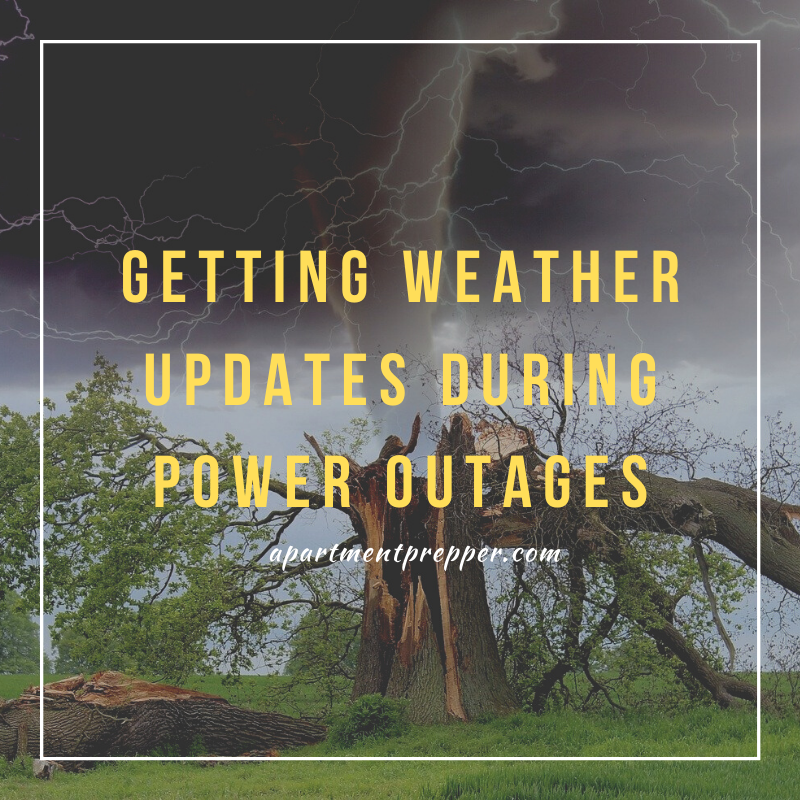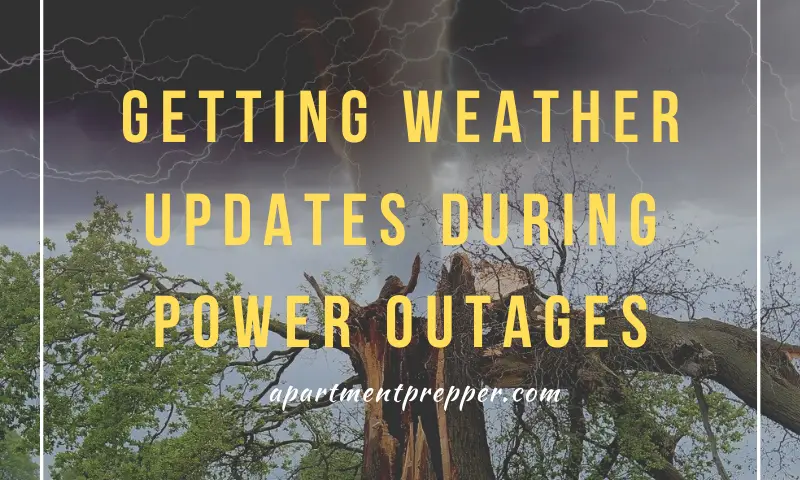Introduction
It’s a familiar feeling for most of us. The power just goes out sometimes. Maybe it’s because a storm-damaged some cabling or a car accident took out a pole. Most of the time, the power is back on within a couple of hours.
But that isn’t always the case.
Natural disasters often cause prolonged power outages. Whether the outage is a permanent condition or a temporary one, you need to have a plan for how to handle the situation without electricity.
Since weather not only causes most power outages but also causes and contributes to most disasters, it should be one of the first things to consider. Your best option during a power outage is to measure everything yourself.
Use NOAA to Stay Informed
Before we get into the details of how you can get accurate weather information through your measurements, you should also invest in a hand-crank or solar radio with NOAA., like this one from FosPower. These tools are a great way to stay up to date for however long broadcasts last in your area.
While measuring it yourself is the most reliable way to ensure you can handle weather conditions during a power outage taking advantage of the NOAA system while available lets you use your valuable time and attention on other important survival tasks.
Since the FosPower radio also includes an SOS alert system, it can also be a handy way to signal for help if you know there are rescue crews in your area during an emergency.
If you decide to go with a different portable NOAA radio, we still recommend looking for one that combines both solar and hand-crank power options. Solar alone is unreliable since you’re likely to run out of juice on cloudy days, and a purely hand crank-powered device takes valuable time and energy to work.
Basic Weather Reading Skills You Need to Learn
When the power is only out for a few hours you may not need to know how to predict the weather. But once you’re talking about a day or more without electricity, you need to know what to expect.
Clouds can give you a good indication, but there are hundreds if not thousands of other weather clues a committed survivalist should learn to watch. To help you get started, The Lost Art of Reading Nature’s Signs: Use Outdoor Clues to Find Your Way, Predict the Weather, Locate Water, Track Animals?and Other Forgotten Skills by Tristan Gooley is a great manual. While it doesn’t focus entirely on the weather, the other information included is just as useful in a survival situation.
Some General Weather Reading Tips
The first thing you need to know is that high-pressure systems tend to be more constant and slow-moving, while low-pressure systems tend to be faster moving and more dynamic. That means high-pressure systems can bring weather like heat waves, while low-pressure systems tend to bring storms.
How can you tell the difference between a low-pressure system and a high-pressure system? Watch the clouds and the birds.
Larger birds like geese and raptors (think hawks, falcons, and eagles) will naturally fly where the air best supports them. On warm sunny days (usually high-pressure days) this can be very high in the sky. Days when the pressure is lower, they’ll fly closer to the ground.
Smaller birds, like swallows and robins, tend to fly where the bugs are. The bugs, like the larger birds, move in the air depending on what the air pressure is doing, so high-flying bug eaters mean high pressure while flying a little lower than normal can mean a low-pressure front is on its way.
Clouds work similarly. High thin clouds don’t turn into storms. High-pressure fronts move the clouds higher in the sky. High-pressure fronts also move in a clockwise direction.
Low pressure, on the other hand, drives clouds lower. Incoming storms are darker, thicker clouds, and move counter-clockwise. Watch out for faster-moving storms, either in terms of rolling in quickly or clouds swirling quickly, both indicate a more volatile front and can predict more intense precipitation and wind.
Bugs suddenly go quiet? During cicada summers the hum of the cicadas’ wings can be a good indication of humidity. They can’t produce noise in humid conditions, and sudden changes in humidity are a good way to predict weather changes and incoming storms.
Listen to Your Body
One part of measuring everything yourself is checking in with your body. Barometric pressure changes affect the way we feel. Every broken a bone? That weather ache isn’t imaginary. Notice changes in your joints or swelling in your fingers and toes right before a storm?
These internal early warning signs are there for a reason. They can tell you when weather is coming hours and even days before it arrives. Don’t ignore the natural weather senses your body gives you.
The Right Tools for the Job
Of course, measuring it yourself also means having the tools to take accurate weather measurements. Digital all-in-one weather stations are great, but only until the power goes out and batteries fail. For the long term we recommend keeping manual weather measuring tools around in addition to your digital ones, that way you’re prepared no matter what happens.
Compass
Your compass isn’t just a navigation tool. A compass will allow you to measure wind direction for yourself. They can also tell you what direction a front is moving as you track clouds across the sky. Even without a weather vane or wind monitor, you can use a damp finger and a compass to determine weather direction.
Portable Barometer and Altimeter
A more reliable way to get accurate barometric pressure information is to measure it yourself with a portable, battery-free altimeter and barometer. This one includes not only the altimeter and a carrying case, but also step by step instructions to help familiarize yourself with the tool.
It’s worth taking the time to familiarize yourself with what different barometric readings are likely to indicate. Practice taking readings, making predictions, and rate your accuracy. That way, you not only gain the relevant skills, but also a better sense of how accurate your predictions are likely to be.
Final Thoughts:
Nothing replaces skill and practice. Measuring weather yourself is great, but you need to take the time to learn to do it, preferably before a prolonged power outage or disaster makes it necessary.
Don’t just practice weather monitoring either. Take other survival steps, like putting out rain barrels ahead of a predicted storm, preparing snow shelters, and planning heat mitigation techniques to match your predictions.
As always, as you build your weather measurement skills you should also plan how your family will cope with each scenario. Knowing what weather is coming won’t help if you don’t also have the tools to deal with adverse weather conditions. Having the know-how and the right tools will see you through.
Image by Barroa_Artworks from Pixabay

Give the gift of prime:


The day before Thanksgiving a wind storm took out the power for most of the day. It was very comforting to fire up the NOAA and the local frequencies for a forecast and news on the outages.
I would recommend some type of Faraday device to protect the radio in case of a SHTF event.
Hi NormlChuck, It really brings peace of mind knowing you’re able to get news and weather updates in spite of being without power. That’s what being prepared is all about. Thanks for sharing your experience! I appreciate the comment.
don’t for get a simple am radio tuned in to 1200 will pick up lightning strikes in your area and tornado static . even if there is no radio stations available , mother nature will provide her own .
Hi bill roth, That is good to know-thanks for the comment!